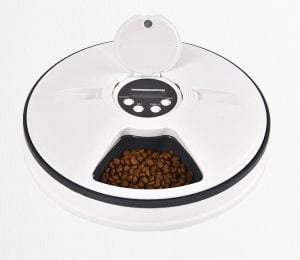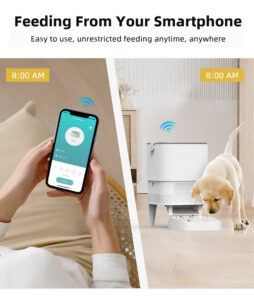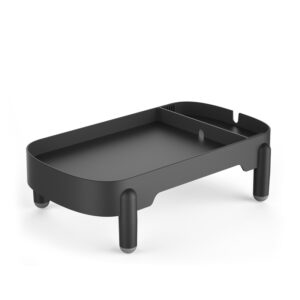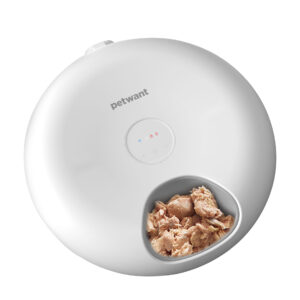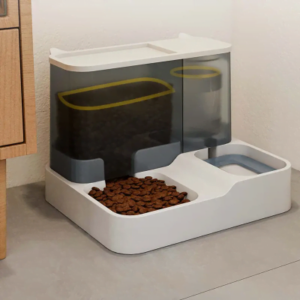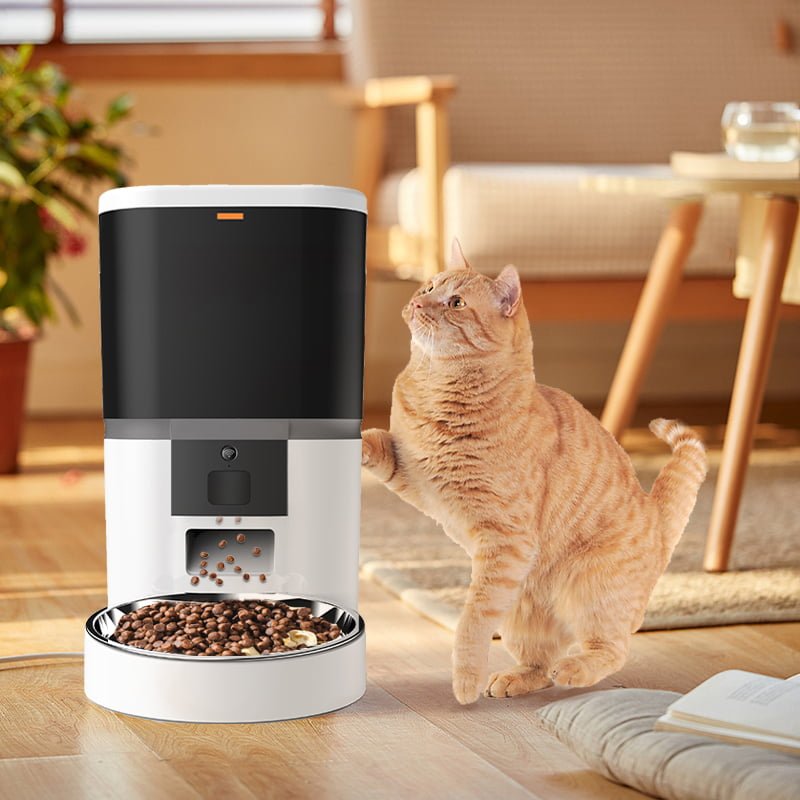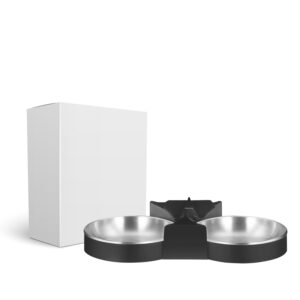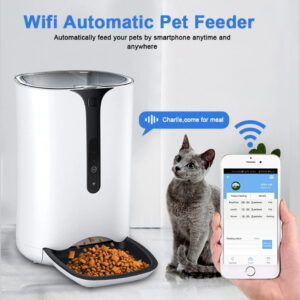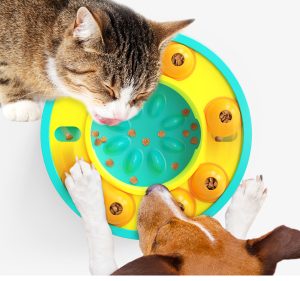Portion Control: Preventing Obesity in Pets
Vets, Medical & Experts Say… Author: Gavin Levenstein Published: 27 January 2025 • Updated: 13 May 2025 Medically reviewed by: TailMe Veterinary Advisory Team (DVM)
Fast takeaways
- Feed by daily calories and grams, not by cups.
- Calculate RER then apply the right factor for life stage, neuter status, and activity.
- Treats should be under 10 percent of daily calories.
- Smart feeders prevent double feeding and keep schedules consistent.
- Track progress with monthly weigh-ins and a 9-point Body Condition Score.
Quick links: Calculate calories and grams | How to measure in grams | Treat limits | Smart feeder tips | BCS guide | FAQs
—
What is portion control for pets
Portion control means feeding the exact calories your pet needs each day, measured in grams, split into predictable meals, with treats limited to 10 percent of daily calories. It prevents weight gain and supports healthy, steady weight loss when needed.
Calculate daily calories first: RER and MER
RER definition Resting Energy Requirement or RER estimates the energy needed at rest. RER formula: RER = 70 × (ideal body weight in kg)^0.75
From RER to daily calories Multiply RER by a lifestyle factor to get daily calories, sometimes called MER.
Typical factors used by vets
- Cats: 1.0–1.2 for weight loss under vet guidance, 1.2–1.4 neutered indoor, 1.4–1.6 intact or active
- Dogs: 1.0 for weight loss under vet guidance, 1.2–1.4 low activity or senior, 1.6 typical adult, 1.8–2.0 very active or working
Important: Use your pet’s ideal weight, not current weight, if overweight.
Try the calculator
Use the TailMe RER/MER calculator to get daily calories and grams. Enter species, ideal weight, neuter status, and activity, then add your food’s kcal per 100 g or per can. Anchor: #calculator
—
Worked examples
Example 1: Neutered indoor cat, 4 kg ideal weight
- RER = 70 × 4^0.75 ˜ 198 kcal
- Factor 1.2 ? Daily calories ˜ 238 kcal
- If dry food is 380 kcal per 100 g ? 238 ÷ 380 × 100 = 63–64 g per day
- Split into 2–3 small meals
- Treat limit: 24 kcal per day max
Example 2: Medium adult dog, 20 kg, active
- RER ˜ 662 kcal
- Factor 1.6 ? Daily calories ˜ 1 060 kcal (up to ~1 320 kcal if very active at 2.0)
- If dry food is 360 kcal per 100 g ? 1 060 ÷ 360 × 100 ˜ 294 g per day
- Split into 2 meals
- Treat limit: ~106 kcal per day max
Example 3: Senior small dog, 7 kg, low activity
- RER ˜ 301 kcal
- Factor 1.2 ? Daily calories ˜ 361 kcal
- If dry food is 370 kcal per 100 g ? 361 ÷ 370 × 100 ˜ 98 g per day
- Split into 2 meals
- Treat limit: ~36 kcal per day max
—
Portion meals in grams
Why grams beat cups Scoop sizes vary and can overfeed by 15–20 percent. A kitchen scale gives you accuracy to the gram.
How to measure in grams 1) Find calories on the label: kcal per 100 g for dry or kcal per can/pouch for wet. 2) Place your pet’s bowl on a digital scale and press tare to zero. 3) Pour food until you reach the target grams for that meal. 4) If your label lists kcal per cup only, weigh one level cup of that food. Convert: – kcal per 100 g = (kcal per cup ÷ grams per cup) × 100 – Daily grams = daily kcal ÷ kcal per 100 g × 100
Download: Printable feeding worksheet and conversions (fill-in chart) Link: /resources/printable-pet-feeding-chart
—
Grams-first quick tables
These examples assume dry food energy density as shown. Always check your specific food.
Cats, neutered indoor, factor 1.2, dry food 370 kcal per 100 g
- 3 kg cat: ~52 g per day
- 4 kg cat: ~64 g per day
- 5 kg cat: ~76 g per day
- 6 kg cat: ~87 g per day
Dogs, moderately active adult, factor 1.6, dry food 360 kcal per 100 g
- 7 kg dog: ~134 g per day
- 10 kg dog: ~175 g per day
- 20 kg dog: ~294 g per day
- 30 kg dog: ~399 g per day
Tip: Split daily grams into 2 meals for dogs and 2–3 small meals for cats. Use slow-feed bowls if your pet gulps food.
—
Treat limits: the 10 percent rule
- Keep treats and extras to under 10 percent of daily calories.
- Use part of your pet’s daily ration as training rewards.
- Choose low-calorie options and check calories per treat.
Examples
- 20 kg active dog at ~1 060 kcal/day ? treats = 106 kcal (about 25 x 4 kcal training treats)
- 4 kg indoor cat at ~238 kcal/day ? treats = 24 kcal (for example, 3–6 tiny treats depending on brand)
See TailMe’s low-calorie dental chews and training treats with clear kcal per piece Link: /dogs/dental-care
—
Smart feeders and apps that help
Common problems solved
- Double feeding in busy households
- Irregular schedules or early-morning wake-up meows
- Multi-pet homes where one pet steals another’s food
- Inconsistent portions by different caregivers
Recommended tools
- TailMe Smart Auto Feeder: portion accuracy to the gram, schedules, app history, slow-feed mode.
Prevent double-feeding and stick to calorie targets. Link: /dogs/auto-feeders and /cats/auto-feeders
- TailMe Microchip Feeder: opens only for the right pet’s microchip or tag.
Ideal for multi-cat homes or when one pet is on a diet. Link: /cats/auto-feeders
- TailMe Pet Scale and tracker: monitor weight weekly or monthly and log BCS, meals, and treats.
Link: /trackers-health
Bundle and save: Weight Management Starter Kit Feeder + Scale with setup guide and a 12-week vet-reviewed plan. Link: /bundles/weight-management-starter-kit
—
Body Condition Score (BCS): check progress visually
Vets use a 9-point BCS. Aim for 4–5 of 9.
- Ribs: Easily felt, not sharply visible
- Waist: Visible from above
- Abdominal tuck: Upward slope behind the ribcage from the side
Weigh monthly and record BCS. Adjust meal grams up or down by 5–10 percent if weight or BCS is trending the wrong way, and speak to your vet for personalised guidance.
Suggested images for this section
- Cat body condition score 5 of 9 diagram (alt: cat body condition score 5 of 9 diagram)
- Dog body condition score 5 of 9 diagram (alt: dog body condition score 5 of 9 diagram)
- BCS 7 of 9 example for educational contrast (alt: overweight dog BCS 7 of 9 visual)
—
Feeding schedules that work
Dogs
- Adult dogs: 2 meals per day, 10–12 hours apart
- Weight-loss plans: keep mealtimes consistent; consider 3 smaller meals if your vet advises
Cats
- Adult cats: 2–3 small scheduled meals
- Is free-feeding bad for cats
For most indoor cats, yes. Grazing makes calories hard to control and encourages overeating. Scheduled, weighed meals are best.
—
How to prevent overfeeding, step by step
1) Calculate daily calories from ideal weight using RER × factor. 2) Convert calories to daily grams using your food’s kcal per 100 g or per can. 3) Split grams into consistent meals and measure with a kitchen scale. 4) Cap treats at 10 percent of daily calories. 5) Weigh monthly, track BCS, and adjust by 5–10 percent if needed. 6) Use smart feeding tools to prevent double feeding and food stealing.
—
FAQs
How many calories should my dog or cat eat daily Use RER = 70 × (ideal kg)^0.75, then apply a lifestyle factor: 1.2–1.4 for many neutered, low-activity pets; 1.6 for typical adult dogs; up to 2.0 for highly active. Your vet can refine this for your pet.
How many grams is one cup of dog food It varies. One level cup of kibble can weigh anywhere from ~90 to 120 g depending on brand and kibble shape. Weigh your specific food once and note grams per cup to convert accurately.
Is free-feeding cats bad For most indoor cats, yes. It often leads to silent calorie creep and weight gain. Scheduled, weighed meals reduce overeating and make weight control far easier.
How fast should my pet lose weight Dogs: about 1–2 percent of body weight per week. Cats: about 0.5–1 percent per week to avoid hepatic lipidosis. Always work with your vet for a safe plan.
How many treats is too many Limit treats to under 10 percent of daily calories. Example: a 20 kg active dog on 1 060 kcal/day gets up to 106 kcal from treats.
—
Why portion control matters
Overfeeding stores extra energy as fat and raises the risk of diabetes, osteoarthritis, heart and respiratory issues, hepatic lipidosis in cats, anaesthetic risk, and shortened lifespan. Even a small daily surplus can add up over time. Accurate, grams-based feeding plus treat control makes the difference.
Long-term benefits of healthy weight
- Easier movement and happier play
- Better joint, heart, and metabolic health
- Improved energy and behaviour
- Longer, healthier life
—
References and further reading
- AAHA Weight Management Guidelines for Dogs and Cats
- WSAVA Global Nutrition Toolkit and energy requirement guidance
- APOP, Association for Pet Obesity Prevention, latest prevalence survey
- Laflamme D. Development and validation of a body condition score system for dogs. Canine Practice. 1997.
- NRC, Nutrient Requirements of Dogs and Cats. National Academies Press.
Note: This guide supports, not replaces, your veterinarian’s advice. Always consult your vet for a tailored weight-loss or medical nutrition plan.

